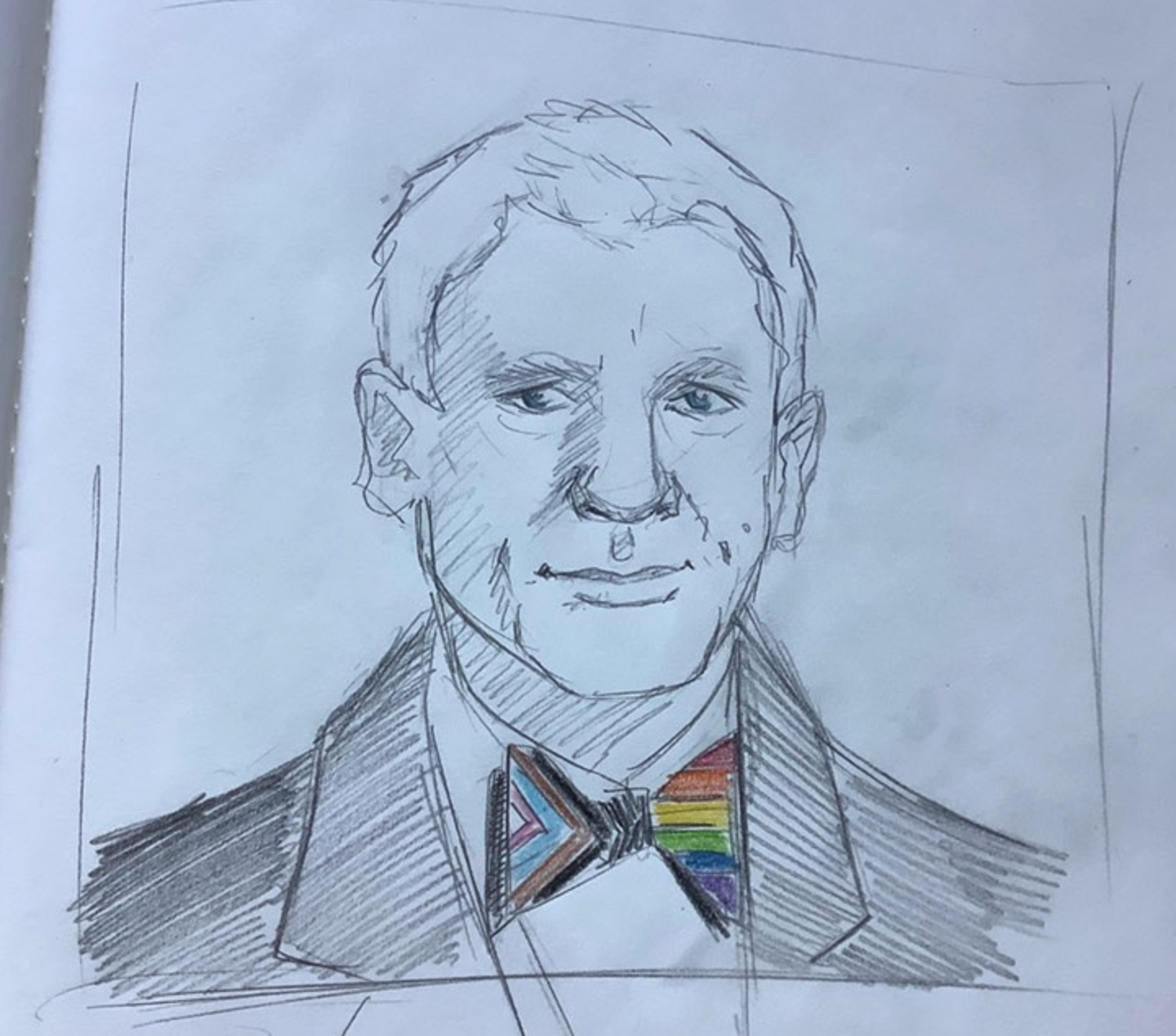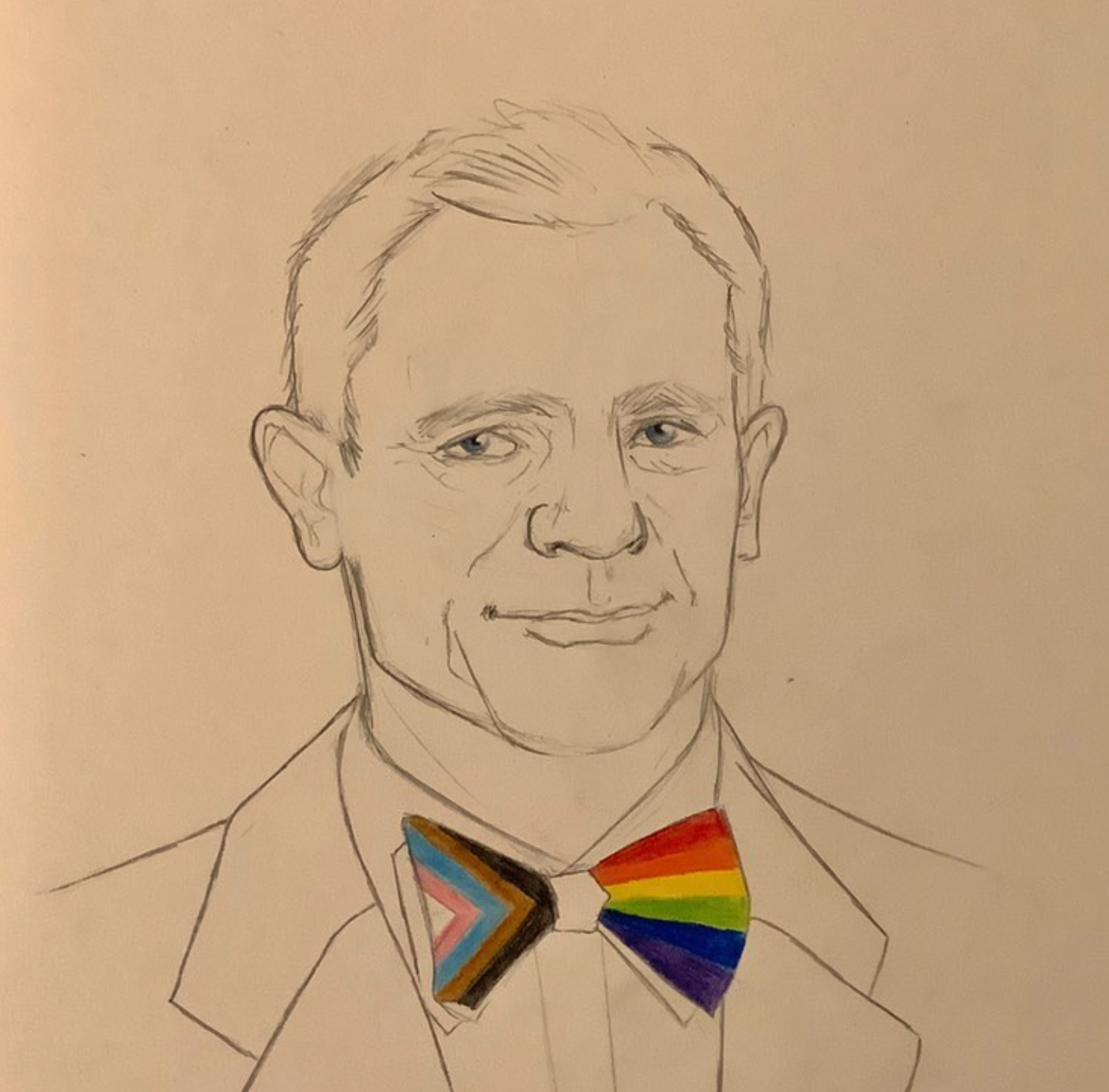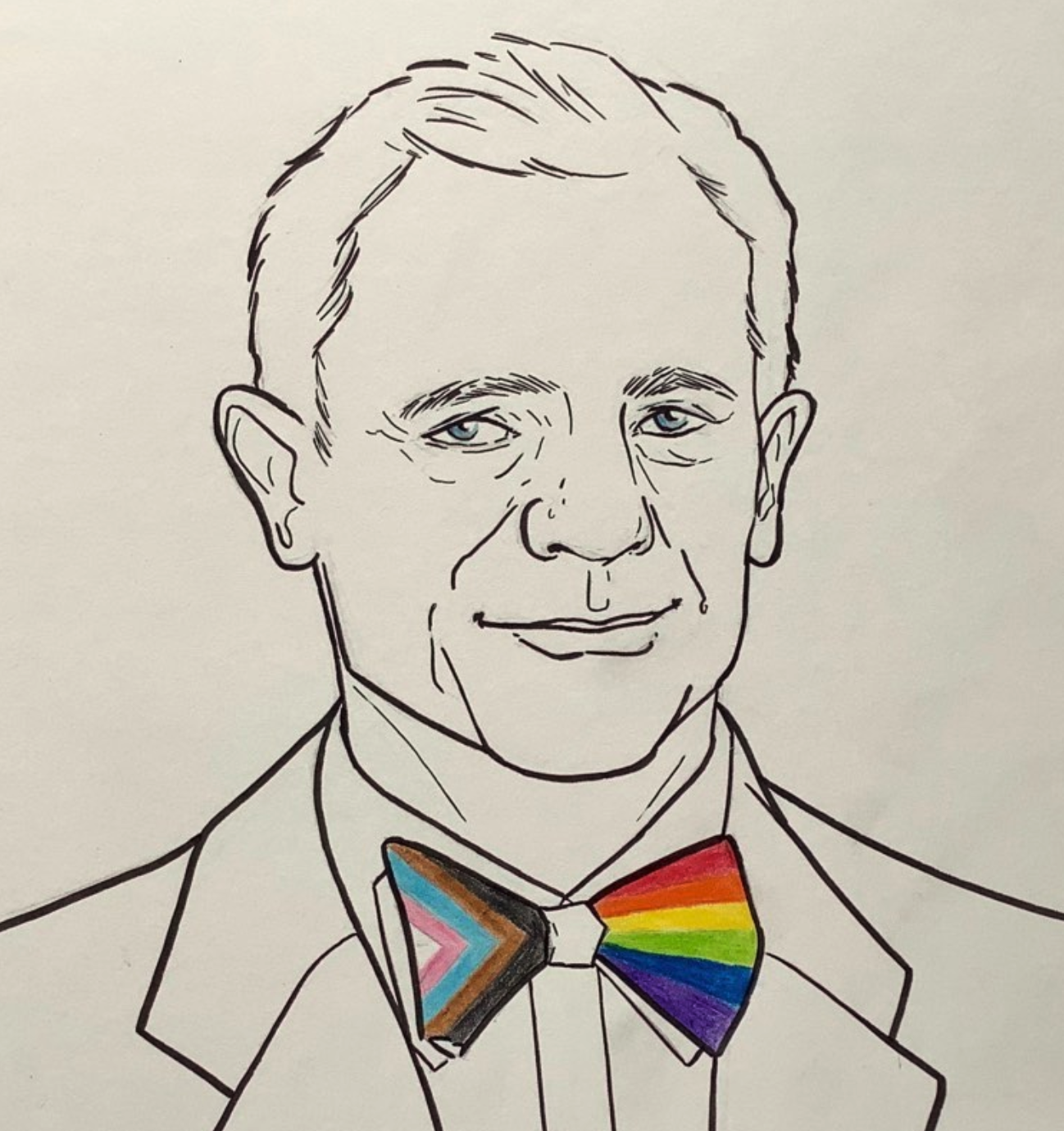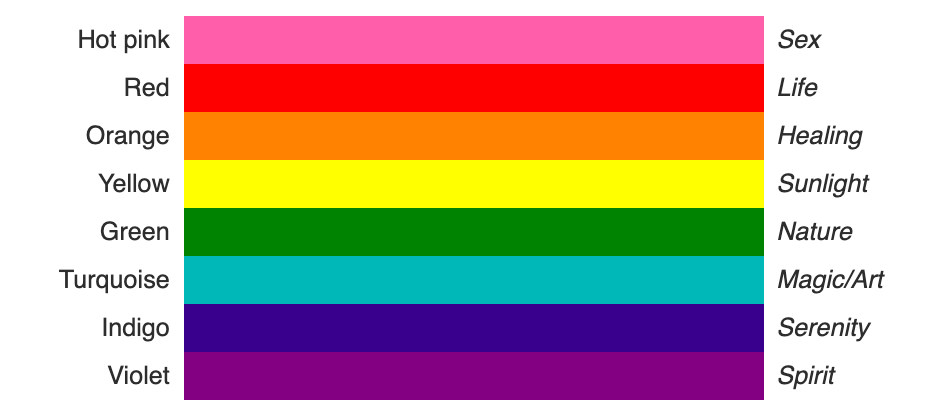The Spy Who Includes Me
James Bond might not, at first glance, appear to be the most likely LGBTQ+ icon, but queer people around the globe are drawn to him. A queer fan from the Netherlands actually draws him. In their new work, they take a classic Bond look and add a recently-updated icon: the more inclusive pride flag.
When Felix (pronouns: they/them) first got in touch we bonded over more than just our mutual appreciation for 007. A glance through the 24 year old’s Instagram reveals a fascination with another queer icon I’m obsessed with: the First World War hero T.E. Lawrence (aka Lawrence of Arabia). Not only do we share similar interests, but also the same profession: teaching, which, as Felix observes can become “all consuming”.
We’ve both struggled to find time to indulge in our out-of-school interests recently but when I suggested to Felix that I thought it would be cool to have Bond wear a bow tie featuring the recently updated LGBTQ+ rainbow flag, they set about it with great enthusiasm.
The finished article is a real treat. You can view the stages Felix went through here - from pencil sketch to inked piece.
Like me, and many others, Felix was introduced to Bond through their family: “My dad and I watched a few Bond films when I was younger, but my love for the franchise really took off when I saw Skyfall at the cinema in late 2012. Since then I’ve come to appreciate (and in some cases, prefer) the older incarnations of Bond, too.”
So why does Felix think they are drawn to Bond? They say: “As David already pointed out on his wonderful website, the fact that Bond goes through so many transitions is absolutely fascinating – and something I can relate to. At the moment I’m still figuring out which labels I’m comfortable with, but I can safely say I do not identify as cisgender – perhaps transmasc, perhaps non-binary. I can, however, safely say that ‘queer Bond fan’ sits well with me, and I’m ecstatic about the existence of this new website and hub where two of my main interests intersect: everything Bond, and everything queer.”
When deciding which bow tie to give Bond, I suggested Felix take use the design of the new, more inclusive rainbow flag.
The rainbow flag we are all familiar with was created in 1978. In Gilbert Baker’s original design it had 8 different coloured stripes. The pink stripe was abandoned because pink dye was expensive and the turquoise stripe made the design uneven when hung vertically in two halves.
Whether they’re aware that each of the colours is supposed to represent a different aspect of life or not, for many queer people, the rainbow flag has a reassuring effect.
When James Bond walks into an unfamiliar space, whether it be an enemy lair or even a hotel room, he quickly surveys it for potential threats. I do the same when I walk into a shop, restaurant, bar or work place. If I see a rainbow flag displayed I know there is a better chance that I’m not in hostile territory. This is at the root of the anxiety many LGBTQ+ people feel about the ‘appropriations’ of ‘their’ flag for other purposes. It muddies the meaning of those six stripes, or at least gives it a multiplicity of meanings. It no longer clearly signifies that ‘this is a safe space’. I share in some of this anxiety while also rationalising my fears by remembering my academic studies in semiotics (the relationship between symbols and meanings): the meanings of flags change over time; newer meanings don’t always make older meanings obsolete; two meanings can happily co-exist.
Maybe it is time for a new LGBTQ+ flag anyway?
It would be a mistake to think that all queer people have the same comforting associations with the six-striped classic. For some, it is a sign that they are NOT welcome.
I’ve never understood why racism and transphobia are rife in some parts of the LGBTQ+ community. I’m acutely aware that, while I belong to a minority group because I am gay, as a white cisgendered man within this group I’m in a position of relative privilege and I see it as my responsibility to champion others, not tear them down.
The city of Philadelophia were the first to add black and brown stripes after noticing that people of colour were often left out. Graphic designer Daniel Quasar, who identifies as non-binary, took it a step further by adding the pink, white and light blue stripes to represent the trans community as part of a chevron alongside the black and brown stripes. Forty years after Baker’s original, in 2018, the progress pride flag was born.
The ‘queer community’ is not as homogenous as many think and there are at least twenty other flags for groups, including people who identify as bisexual, non-binary, genderqueer and many more. Even straight allies have their own flag.
I truly believe Bond has universal appeal and that’s why I’m so passionate about making Licence To Queer a “hub” (to use Felix’s apt word) where the voices of all queer Bond fans can be heard.





